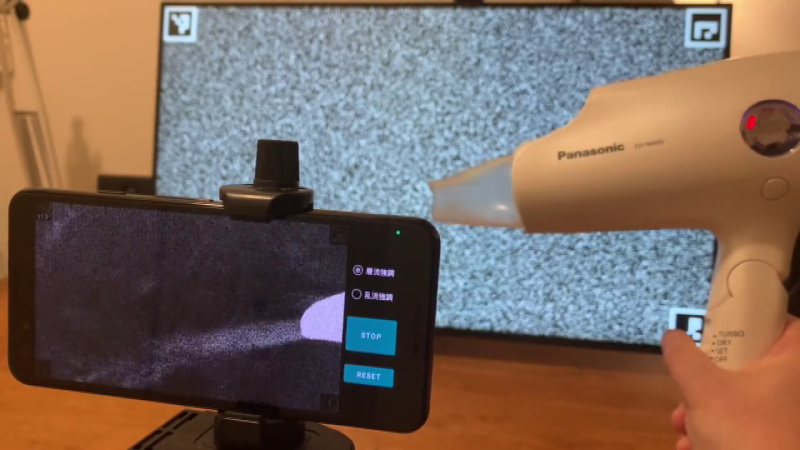Observe Airflow Using Smartphone And Background-Oriented Schlieren

Multiple people have recently shared this exciting demonstration (nitter) with us – visualizing airflow using a smartphone, called ‘background-oriented schlieren’. On a hot summer day, you might see waves in the air – caused by air changing density as it warms up, and therefore refracting the light differently. Schlieren photography is an general set of techniques for visualizing fluid flow, but of course, it can also be applied to airflow. In this case, using some clever optical recognition tricks, this schlieren method lets you visualize flow of air using only your Android smartphone’s high resolution camera and a known-pattern printed background!
The scientific paper behind this trick describes this method’s workings quite well – recommended to check out. For a simple explanation, since the background is high-contrast and known to the smartphone app, you can amplify the differences between what the camera expects to see and what the camera sees – the datamatrix codes in the corners help your smartphone recognize the background image’s position for more exact mapping. Hot air and cold air flow are the most pronounced visually, and it’s not clear how much regular airflow will be noticeable. However, the Android application sourcecode and the printable pattern are freely available on GitHub – you can just try this method out and see if how well it works!
This is a wonderfully executed and accessible hack, and we wonder what kind of purposes our fellow hackers could use it for. In a way, this is a poor man’s thermal camera for airflow purposes! We’ve covered a mirror-based schlieren setup a few years ago – also using a smartphone. Perhaps those omnipresent high-resolution camera-equipped devices can be useful for more things than we realize!
スマホのカメラだけで空気の流れを見えるようにするアプリを作ってみた。 pic.twitter.com/XaQ7lgmVJ1
— kambara (@kambara) July 12, 2022
We thank [shinwachi] and an anonymous submitter for sharing this with us!
Post a Comment